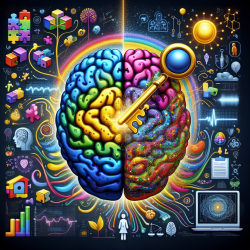Understanding the Impact of Traumatic Brain Injury on Children
Traumatic brain injury (TBI) is a significant public health concern, particularly in children, with over 600,000 cases annually in the United States alone. These injuries can lead to long-term challenges in psychosocial adjustment and neurocognitive functions, including social cognition. Recent research has highlighted the role of the mentalizing network (MN) and theory of mind (ToM) in mediating these outcomes, offering new insights for practitioners.
The Role of the Mentalizing Network and Theory of Mind
The mentalizing network is a collection of brain regions that enable individuals to understand and interpret the mental states of themselves and others. This network is crucial for the development of ToM, which is the ability to infer others' thoughts, beliefs, and emotions. In children with TBI, particularly severe cases, damage to these brain regions can lead to reduced MN volume and poorer ToM abilities, impacting social adjustment.
Research Insights: A Path to Better Outcomes
The study titled The mentalizing network and theory of mind mediate adjustment after childhood traumatic brain injury provides valuable insights into how practitioners can enhance therapy outcomes for children with TBI. Key findings include:
- Children with severe TBI showed reduced right-hemisphere MN volume and poorer ToM compared to those with orthopedic injuries.
- Right-hemisphere MN volume and ToM were significant mediators between severe TBI and social adjustment.
- Neuroimaging of social brain networks and assessment of social cognition can help identify children at risk of poor adjustment, allowing for targeted intervention.
Practical Applications for Practitioners
Practitioners can leverage these findings to improve therapy outcomes by:
- Incorporating assessments of ToM and MN volume in their evaluations to better understand the social cognitive deficits in children with TBI.
- Using targeted interventions that focus on enhancing ToM skills, such as perspective-taking exercises and social skills training.
- Collaborating with neuroimaging specialists to identify specific brain regions affected by TBI and tailor interventions accordingly.
Encouraging Further Research
While the study provides a strong foundation, further research is needed to explore the dynamic changes in cognitive and psychosocial functioning post-TBI. Practitioners are encouraged to contribute to this growing body of knowledge by conducting longitudinal studies and exploring innovative therapeutic approaches.
To read the original research paper, please follow this link: The mentalizing network and theory of mind mediate adjustment after childhood traumatic brain injury.










